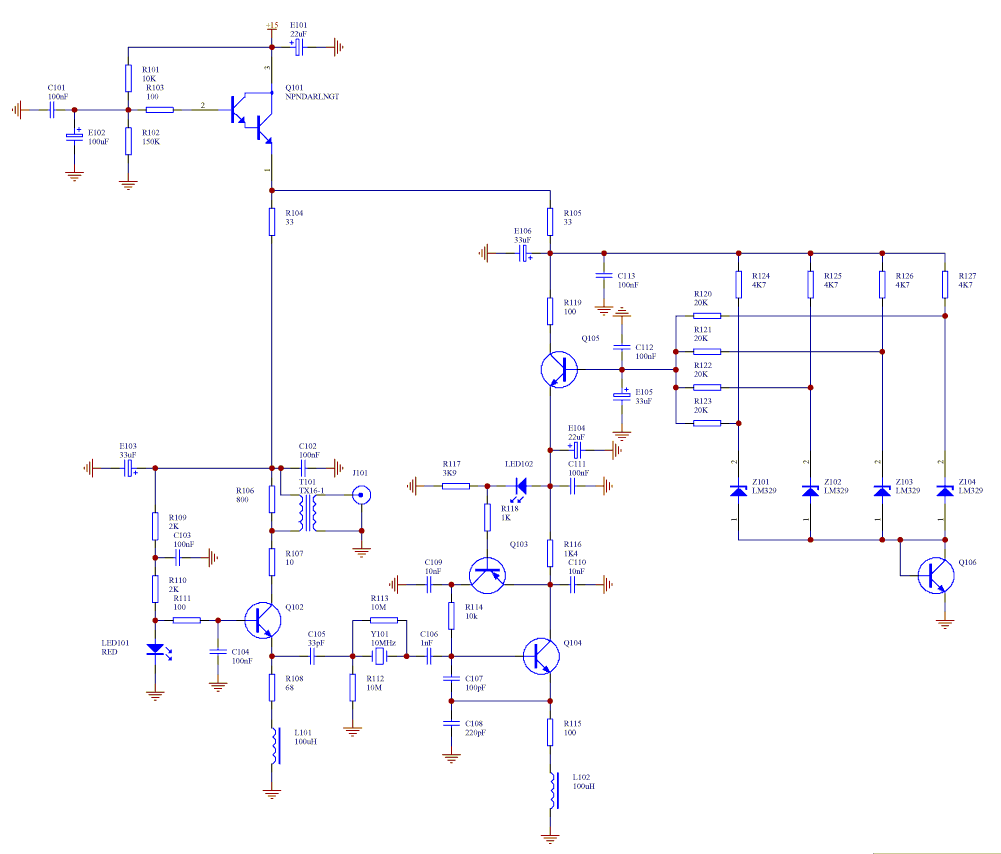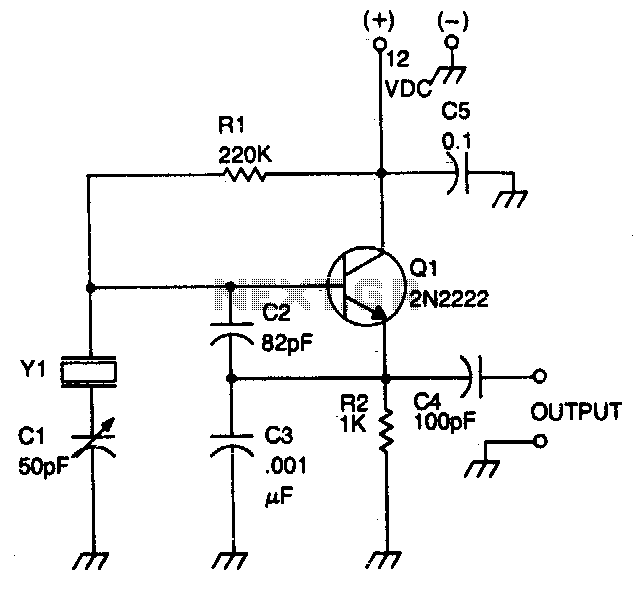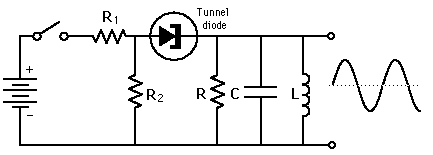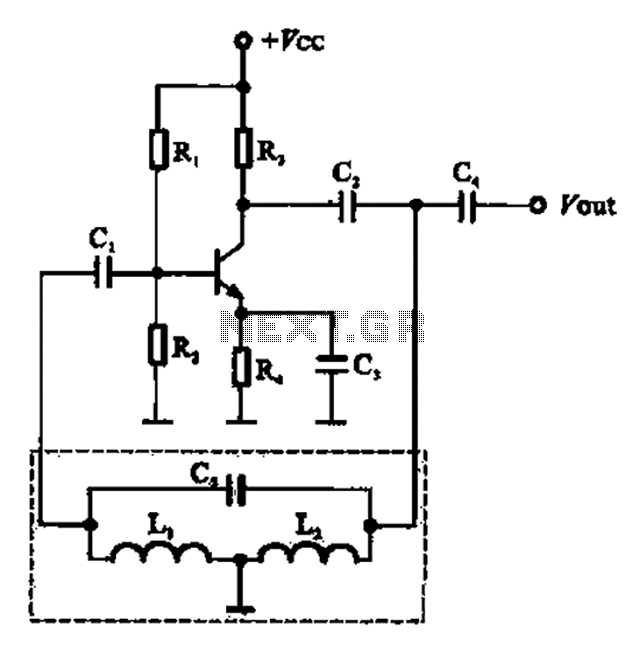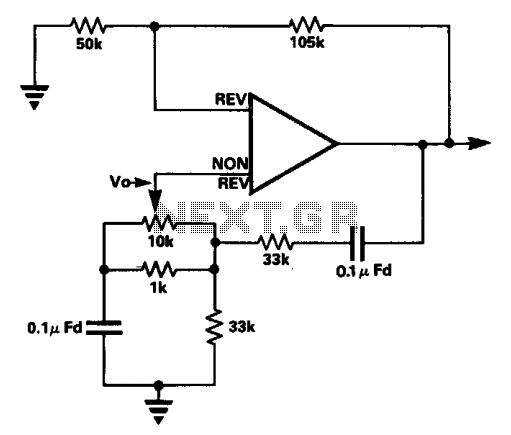
Tunable single comparator oscillator
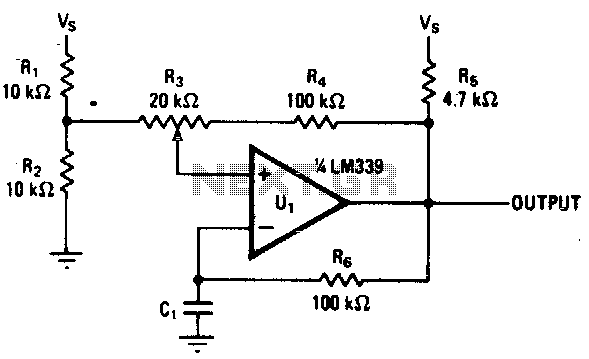
Varying the amount of hysteresis in this comparator circuit allows for smooth adjustment of output frequencies within the range of 740 Hz to 2 kHz. The hysteresis level, in combination with the time constant formed by resistor R6 and capacitor C1, influences the duration required for the comparator (CI) to charge or discharge to the new threshold after a change in output voltage.
The comparator circuit operates by comparing two input voltages and producing a digital output based on which input is higher. The inclusion of hysteresis in the circuit design introduces a feedback mechanism that prevents rapid toggling of the output when the input voltage fluctuates around the threshold value. This stability is crucial in applications where noise might otherwise cause erratic behavior.
The hysteresis can be adjusted by modifying the feedback resistor values, which alters the reference voltage for the comparator. This adjustment enables the output frequency to be varied smoothly across the specified range. The time constant, determined by the product of resistor R6 and capacitor C1, plays a pivotal role in defining the charging and discharging behavior of the circuit. A larger time constant results in slower transitions, while a smaller time constant allows for faster changes.
In practical applications, this circuit can be employed in frequency modulation systems, pulse width modulation, and other signal processing tasks where precise control over frequency output is required. The design must ensure that the components selected can handle the desired frequency range and provide sufficient stability and response time for the intended application. Proper selection of R6 and C1 values is essential to achieve the desired hysteresis and time constant characteristics, ensuring optimal performance of the comparator circuit.Varying the amount of this comparator circuit"s hysteresis makes it possible to vary output frequencies in the 740-Hz to 2-kHz range smoothly The amount of hysteresis together with time constant R6C1 determines how much time it takes for CI to charge or discharge to the new threshold after the output voltage switches. 🔗 External reference
The comparator circuit operates by comparing two input voltages and producing a digital output based on which input is higher. The inclusion of hysteresis in the circuit design introduces a feedback mechanism that prevents rapid toggling of the output when the input voltage fluctuates around the threshold value. This stability is crucial in applications where noise might otherwise cause erratic behavior.
The hysteresis can be adjusted by modifying the feedback resistor values, which alters the reference voltage for the comparator. This adjustment enables the output frequency to be varied smoothly across the specified range. The time constant, determined by the product of resistor R6 and capacitor C1, plays a pivotal role in defining the charging and discharging behavior of the circuit. A larger time constant results in slower transitions, while a smaller time constant allows for faster changes.
In practical applications, this circuit can be employed in frequency modulation systems, pulse width modulation, and other signal processing tasks where precise control over frequency output is required. The design must ensure that the components selected can handle the desired frequency range and provide sufficient stability and response time for the intended application. Proper selection of R6 and C1 values is essential to achieve the desired hysteresis and time constant characteristics, ensuring optimal performance of the comparator circuit.Varying the amount of this comparator circuit"s hysteresis makes it possible to vary output frequencies in the 740-Hz to 2-kHz range smoothly The amount of hysteresis together with time constant R6C1 determines how much time it takes for CI to charge or discharge to the new threshold after the output voltage switches. 🔗 External reference
Warning: include(partials/cookie-banner.php): Failed to open stream: Permission denied in /var/www/html/nextgr/view-circuit.php on line 713
Warning: include(): Failed opening 'partials/cookie-banner.php' for inclusion (include_path='.:/usr/share/php') in /var/www/html/nextgr/view-circuit.php on line 713
